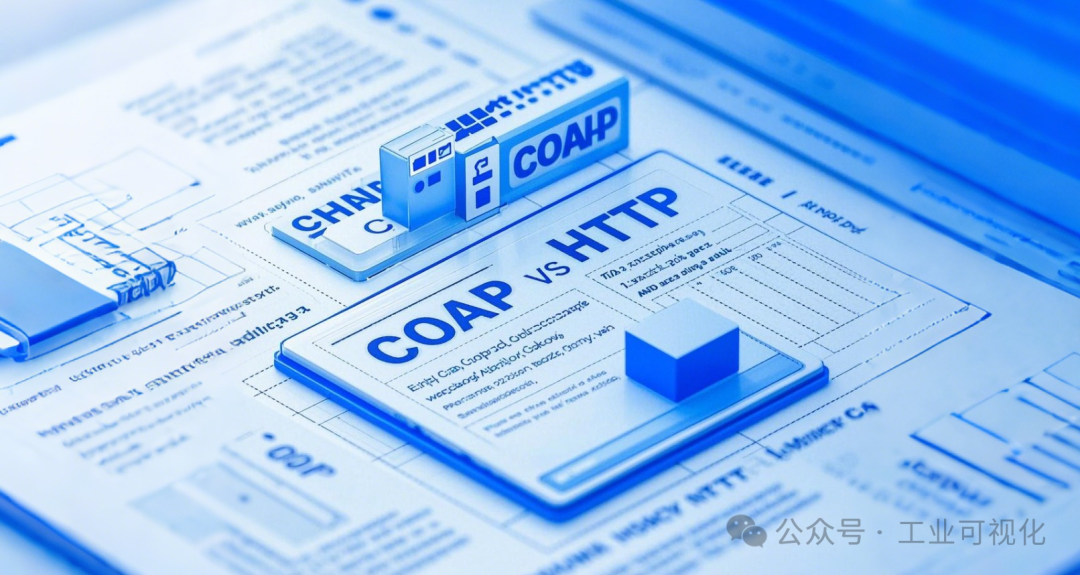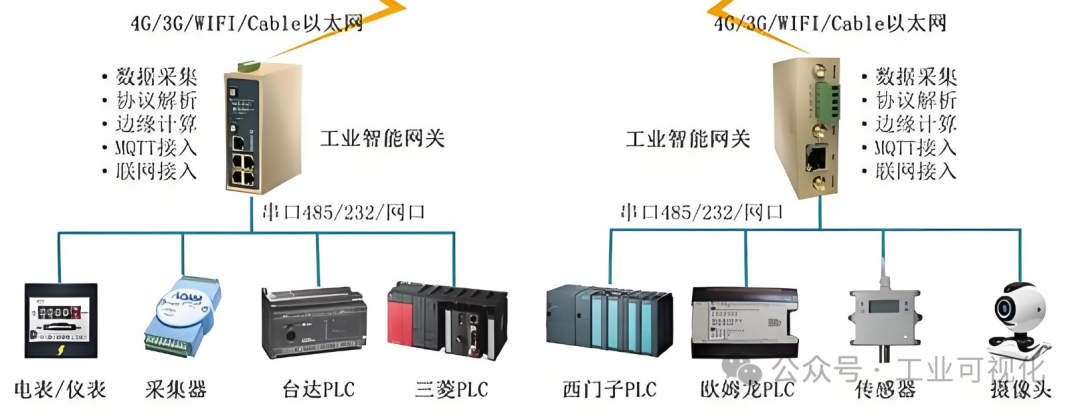Free for commercial use! An industrial Internet of Things platform with over 1500 components.
IoT MQTT and CoAP, which one is your favorite?
The lightweight IoT protocol CoAP.
In the Industrial Internet of Things (IIoT), industrial devices often require frequent data collection and communication. Here, we must mention a lightweight protocol: CoAP (Constrained Application Protocol). In simple terms, CoAP is a network protocol specifically designed for resource-constrained devices. It is based on UDP (rather than TCP), occupies very little bandwidth, yet is extremely powerful. Compared to traditional communication protocols (like HTTP), CoAP consumes less energy and provides more efficient data transmission, making it very suitable for industrial data collection needs.

For example, sensors in a factory need to regularly monitor temperature, humidity, or pressure and transmit data to a central system for analysis. If the sensors use the CoAP protocol, data transmission is not only faster but also saves computational resources and bandwidth, ensuring the stability of the entire network.
Why is CoAP Suitable for Industrial Data Collection?

In industrial scenarios, many devices operate in constrained environments, such as limited memory, battery power, and unstable network conditions. The design of CoAP is precisely aimed at solving these issues. Here are several reasons why CoAP excels in industrial data collection:
- 1.Lightweight Protocol: CoAP packets are very small, and since it uses the UDP protocol, there is no need to establish complex connections, greatly reducing the processing power required by devices. This makes it particularly suitable for use in bandwidth-limited industrial networks.
- 2.Hierarchical Data Transmission: CoAP employs a REST-like architecture model (GET, POST, PUT, and DELETE requests), making data collection and management very intuitive. For example, a sensor can simply transmit measurement data via a GET request, which saves computational power and is easy to invoke and parse.
- 3.Low Power Characteristics: There are many battery-powered devices in industrial environments, such as remote sensors. CoAP allows these devices to perform data collection and communication with minimal resources, significantly extending battery life.
- 4.Support for Asynchronous Communication: CoAP is adept at handling asynchronous operations, meaning devices can communicate when needed without needing to stay online for long periods. For instance, when the temperature of a mechanical device exceeds the normal range, the sensor will send alarm data to the server.
Specific Application Scenarios
To make the role of CoAP more intuitive, here are several actual application scenarios in industrial data collection.
-
1.Environmental Monitoring: In smart factories, environmental monitoring systems often use a large number of low-power sensors. These sensors regularly collect data on temperature, humidity, air quality, etc., via the CoAP protocol and upload it to a central platform. For example, a steel plant has deployed hundreds of sensors to monitor workshop temperatures. Through CoAP, the sensors send data every 5 minutes, which not only occupies very little bandwidth but also ensures real-time monitoring.
-
2.Equipment Health Management: The operational status data of industrial equipment (such as vibration amplitude, current, or working hours) needs to be collected in real-time for predictive maintenance. The CoAP protocol allows these monitoring devices to actively push data at intervals and send alerts when anomalies are detected, enabling precise predictions of equipment lifespan.
-
3.Distributed Energy Management: In distributed energy networks, photovoltaic power plants or micro wind turbines typically use the CoAP protocol to transmit generation data to centralized control systems. Due to CoAP’s lightweight nature, data transmission remains stable and reliable even if the power plants are located in remote areas.
Technical Advantages of CoAP in Industrial Data Collection

Although other protocols can be chosen in the industrial field, CoAP has its unique technical advantages:
1. Message Reliability: Although CoAP is based on UDP, it has designed a feature called “Confirmable Message” to ensure the reliability of critical data transmission. Even if the first transmission fails, CoAP will automatically retry.
2. High Scalability: CoAP supports direct point-to-point communication with sensors and can also achieve complex cross-network communication configurations through proxy servers.
3. Natural Compatibility with HTTP: For industrial software systems that already use HTTP, CoAP can be seamlessly integrated, as its design follows the REST architecture and can even format data directly as JSON, facilitating data analysis or visualization.
CoAP perfectly meets the needs of industrial data collection with its lightweight and efficient characteristics, especially excelling in scenarios such as sensor monitoring and equipment management. Thanks to its high flexibility and low energy consumption design, it has gradually become one of the preferred protocols in industrial IoT environments. In the future, as technology continues to mature and industrial demands increase, CoAP will continue to lead the new direction of industrial data collection.
Recent Hot Articles:
| The Rise of Web Configuration! What’s So Strong About It???Transparent!!! What’s the Importance of Networking in DCS?Must-Read!!! A Comprehensive Overview of Serial Ports for Industrial Control ProfessionalsSecrets of PLC Communication Revealed!!!Incredible! 4 Tricks to Make the 485 Bus Stable as a Rock |